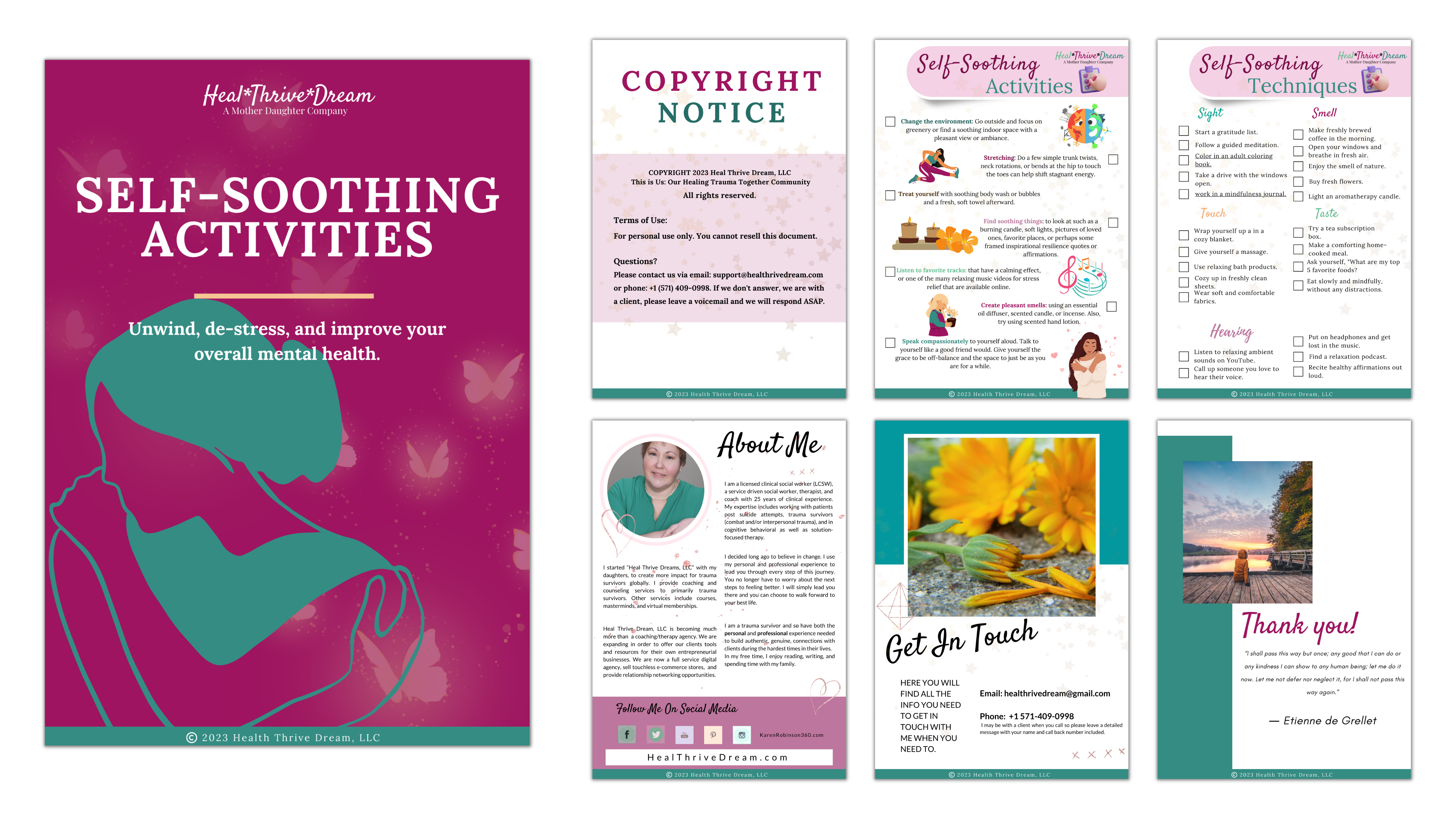Trauma survivors often face a daunting journey towards healing and recovery, as they navigate the complex aftermath of their experiences. While therapy and support systems play crucial roles in this process, there is an additional key element that can empower you on your healing path: self-soothing skills. Self-soothing skills allow you to regulate your emotions, manage distressing triggers, and find solace within yourself. By cultivating these abilities, you can harness your own inner strength and resilience, foster hope and passion for your future. I will delve into the importance of self-soothing skills for you and other trauma survivors.

The role of self-soothing in trauma recovery
The role of self-soothing skills in trauma recovery is an essential and empowering aspect for survivors. Trauma can have a profound impact on your emotional well-being, leaving you feeling overwhelmed and helpless. However, by cultivating self-soothing techniques, you can regain a sense of control over your healing process. These skills enable you to soothe yourself during moments of distress, providing comfort and stability amidst the chaos that trauma often brings.
Self-soothing skills encompass various techniques that promote relaxation and emotional regulation. Breathing exercises, grounding techniques, and guided imagery are powerful tools that can empower you to calm your mind and body. By focusing on your breath or visualizing peaceful or safe scenes, you can redirect your attention away from intrusive thoughts or triggers associated with the traumatic event. As you become more adept at practicing these strategies, you gradually develop a greater capacity to manage stress and anxiety in daily life.
Discover the Transformative Benefits of Developing Self-Soothing Skills for Survivors
Surviving a traumatic experience can leave deep emotional scars, but the journey towards healing and recovery is not impossible. One powerful tool that you have at your finger tips is self-soothing skills. These invaluable abilities allow you to regulate your emotions, find inner peace, and take control of your life. By investing time and effort into developing self-soothing techniques, you can reap benefits along your path to healing.
Cultivating self-soothing skills empowers you to regain a sense of control over your emotions. Trauma often leaves you feeling overwhelmed by intense feelings such as fear, anger, or sadness. However, by practicing techniques like deep breathing exercises or engaging in activities that bring joy and relaxation, you gain the ability to manage these emotions effectively.
Techniques for practicing self-soothing
Self-soothing techniques empower you to regulate your emotions and find inner peace amidst challenging situations. By honing these techniques, you can cultivate a sense of hopefulness and reclaim control over your emotional well-being.
One effective technique includes deep breathing exercises. Taking slow, intentional breaths in through the nose and out through the mouth activates the body's relaxation response, reducing feelings of stress and anxiety. This simple practice can be done anywhere at any time, making it an accessible tool for you to turn to when you need immediate relief.
Another valuable method is grounding yourself in the present moment. Often, past traumas or distressing memories can overwhelm survivors, causing you to feel disconnected from reality.
My current favorite techniques of self soothing include:
- I Love You Exercise
- Self-Havening Skills
- Inner Child Exercise
- Self-Soothing With Energy Work

The “I love you” exercise is a simple technique. Place your hands over your heart and repeat, “I love you” for thirty seconds. Take a few deep breaths before starting and let the words soothe you. That is it. Moving on to self-havening skills, I’m not sure if I can describe it in such a way to do the technique justice. It is a serious of face, hand and arm touches that are gentle and remind me of how you would touch a baby or small child. The expert on self-havening skills is Dr. Kate Truitt and I recommend watching her YouTube videos to learn the technique.
There are multiple inner child books, workbooks, journals, and techniques on-line on how to do this work. For quick self-soothing, I recommend finding a comfortable and quiet spot and ask yourself these two questions: 1. How does the small you feel? 2. What does she need? Really spend time reflecting on these questions and get really quiet so you can hear the needs of your inner child. The last skill I will mention in this blog post is using the flow of energy to soothe yourself. The idea here is to swipe the negative thoughts and energy out of your head using your hands, swipe out through your arms and down your body, down your legs, through your toes. To add positive energy into your body, try patting it in. Pat the healthy/positive thought into your head, your arms using the butterfly hug, pat into your heart, lungs, stomach, hips, legs, feet, etc. Try it a few times and let me know how it works for you!
A gift for you, Self-soothing Activities, techniques you can practice on your own using your five senses and items you likely already have on hand at home. Self-soothing activities accompanied with therapy and a support group are what is needed to set yourself up for healing and recovery.
The Importance of Professional Support in Healing: Restoring Hope and Nurturing Resilience
In the journey towards healing from trauma, the significance of professional support cannot be overstated. Whether it's recovering from a personal loss, navigating the aftermath of an abusive relationship, or addressing deep-seated childhood wounds, seeking help from trained professionals is a crucial step in restoring hope and nurturing resilience. Therapists possess the knowledge, skills, and experience to guide you through your dark moments and empower you to heal your wounds.
One of the primary reasons why professional support is so vital in trauma healing is that qualified, trauma competent therapists (like me) create a safe space for survivors to share their experiences without judgment or fear. Therapists and trauma informed coaches offer a compassionate listening ear that validate your pain and provide validation for your emotions.
Conclusion: Empowering trauma survivors through self-soothing techniques
In conclusion, self-soothing techniques have the potential to greatly empower your journey towards healing and recovery. By providing you with effective tools to regulate your emotions and manage stress, you will gain a sense of control and self-compassion that is crucial for rebuilding a positive sense of self. As you learn to navigate your own unique healing path, it is essential that you have access to resources and support systems that encourage your exploration and implementation of self-soothing techniques. With continued research, education, and awareness, we can all contribute to creating a world where trauma survivors are empowered to reclaim their lives and find solace in the power of self-soothing.
In case you missed it above, I have a free gift for you, Self-Soothing Activities.




Karen, too many of us have trauma in our past. You make really good points. The idea of positive self-soothing is great! I was interested in your workbook, but your system requires a credit card to obtain the free workbook. Is that really how you meant to set it up?
Hi Kebba,
ThriveCart is setup this way. To bypass credit card, hit PayPal. The fee is zero, so nothing will be withdrawn. Thank you for reading my blog!
I’m glad these techniques exist for those who need till it. Thanks for sharing these ideas.
Thank you Elisa for reading my blog!
Learning to self soothe is so important – ironically it is raining outside and as soon as I am done commenting, I am going to download your workbook and sit on the porch for some self soothing under the rainfall!! So glad to "meet" you today!
Thank you Julie! I hope you enjoy the self-soothing activities!